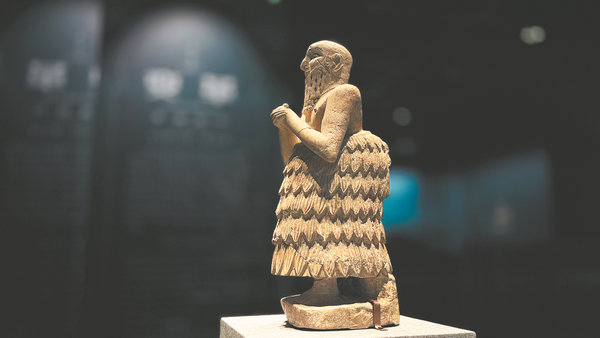

The most ancient item on display is a stone hand axe from the early Paleolithic Age, dating back 500,000 to 300,000 years.
Another highlight is a statue of a worshipper, dressed in typical Sumerian attire and striking a pose as if in prayer.
"Despite the changes of time and kingdoms, Syria's rich cultural heritage remains amazing," the exhibition's description states.
"As the common wealth left by history to people throughout the world, though silent, the cultural relics carry the wonderful diversity of civilizations."
Cao Mingyu, an associate professor of history at Dalian University who specializes in ancient West Asian history and culture, notes that archaeological discoveries and research, both domestic and international, indicate that ancient West Asia and Central Asia, including Syria, had close interactions among populations and cultural exchanges with ancient China.
"The ancient Silk Road routes functioned like a major artery for civilizational engagement between the East and West, comprehensively promoting communication and exchange among countries along the route and jointly advancing the development of world civilization," says Cao, pointing out that several exhibits vividly highlight these characteristics.